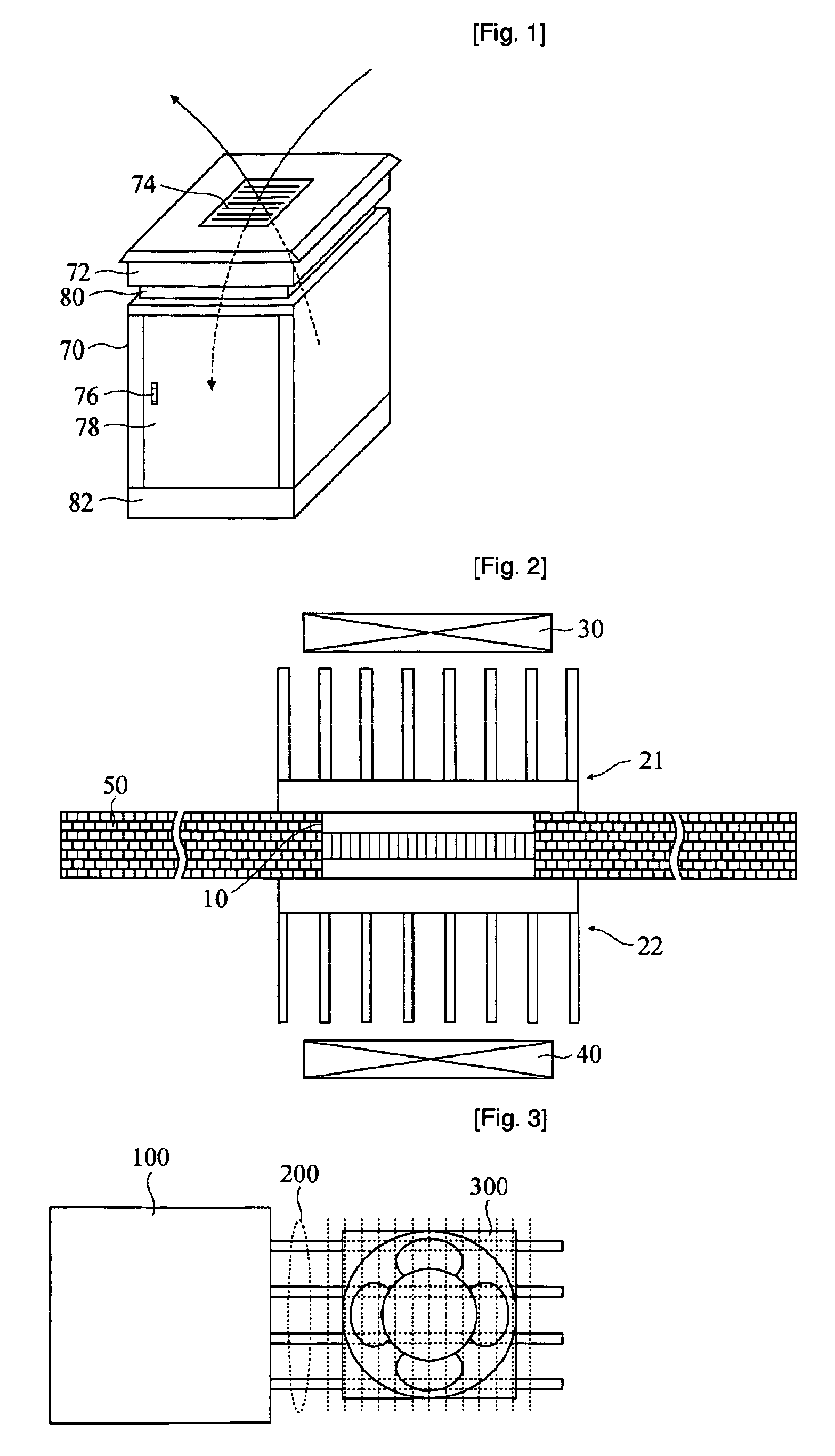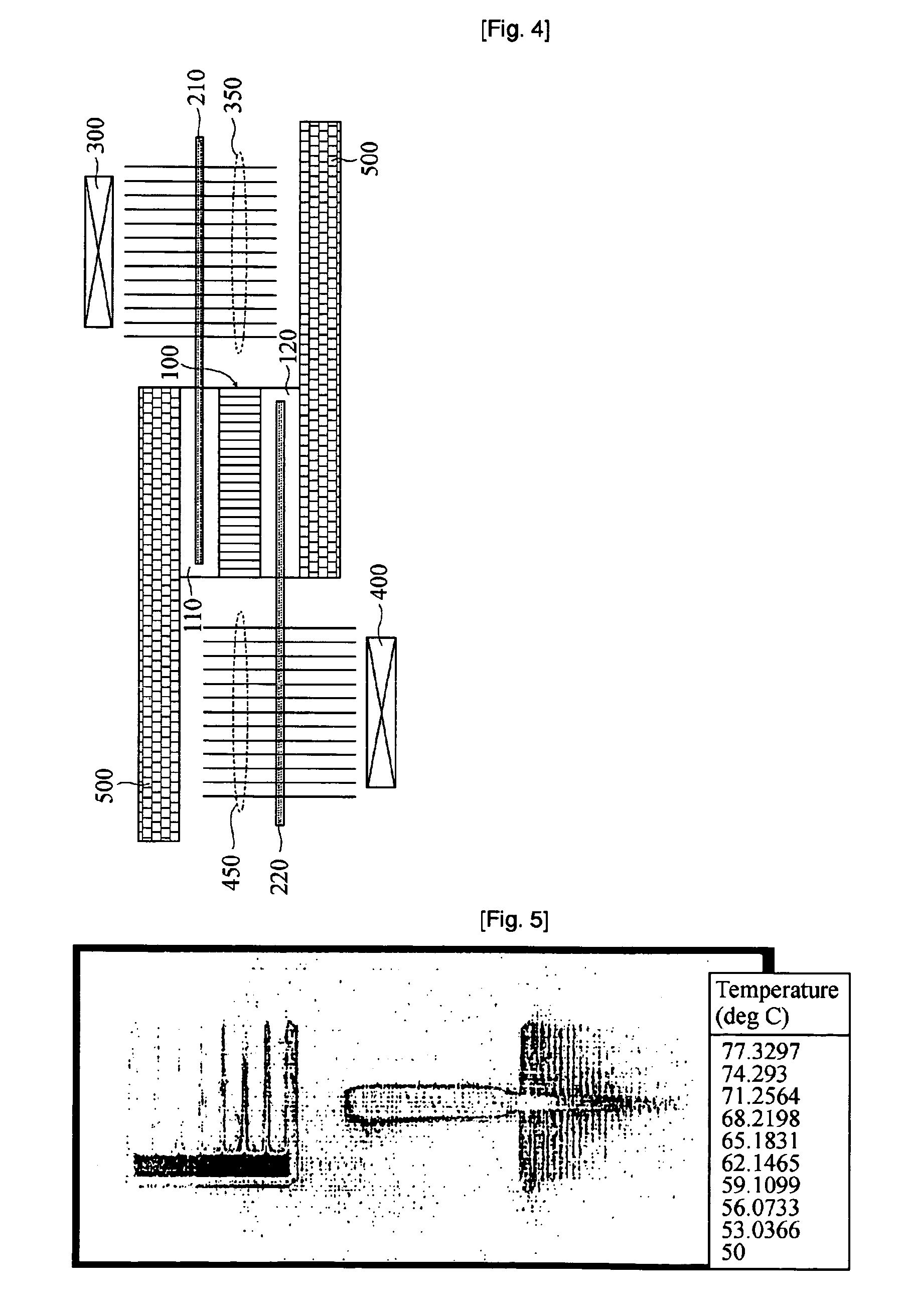Compact thermal exchang unit of thermo-electric cooling mode using heat pipe
a heat pipe and thermo-electric cooling technology, applied in the direction of refrigeration machines, cooling/ventilation/heating modifications, and modifications for standard racks/cabinets, etc., can solve the problems of lager size of the overall communication system, device out of order, and conventional heat sinks that cannot no longer effectively perform radiation, etc., to enhance effectively radiating inside heat, and enhancing radiation ability per unit volume
- Summary
- Abstract
- Description
- Claims
- Application Information
AI Technical Summary
Benefits of technology
Problems solved by technology
Method used
Image
Examples
Embodiment Construction
[0025]FIGS. 3 and 4 depict the structure of the present invention to which heat pipes are applied.
[0026] As shown therein, the plates (110, 120) formed in the center of the TEC heat exchanger, considering the thermal transmission area, are formed on an upper side and a lower side of the unit. The housing wall (500) is formed on an upper side and a lower side of the plates.
[0027] A plurality of heat pipes (210, 220) are directly inserted into the center of each plate, wherein the heat pipes (210) are formed on the right and the heat pipes (220) are formed on the left. A thin high-density fin stack (350) is formed for the heat pipes (210) to be centered on the fin stack (350). Further, an external fan (300) for processing an outside air is formed on an upper side of the fin stack (350). A thin high-density fin stack (450) is formed for the heat pipes (220) to be centered on the fin stack (450). Also, an internal fan (400) for processing an inside air is formed on a lower side of the...
PUM
 Login to View More
Login to View More Abstract
Description
Claims
Application Information
 Login to View More
Login to View More - R&D
- Intellectual Property
- Life Sciences
- Materials
- Tech Scout
- Unparalleled Data Quality
- Higher Quality Content
- 60% Fewer Hallucinations
Browse by: Latest US Patents, China's latest patents, Technical Efficacy Thesaurus, Application Domain, Technology Topic, Popular Technical Reports.
© 2025 PatSnap. All rights reserved.Legal|Privacy policy|Modern Slavery Act Transparency Statement|Sitemap|About US| Contact US: help@patsnap.com



